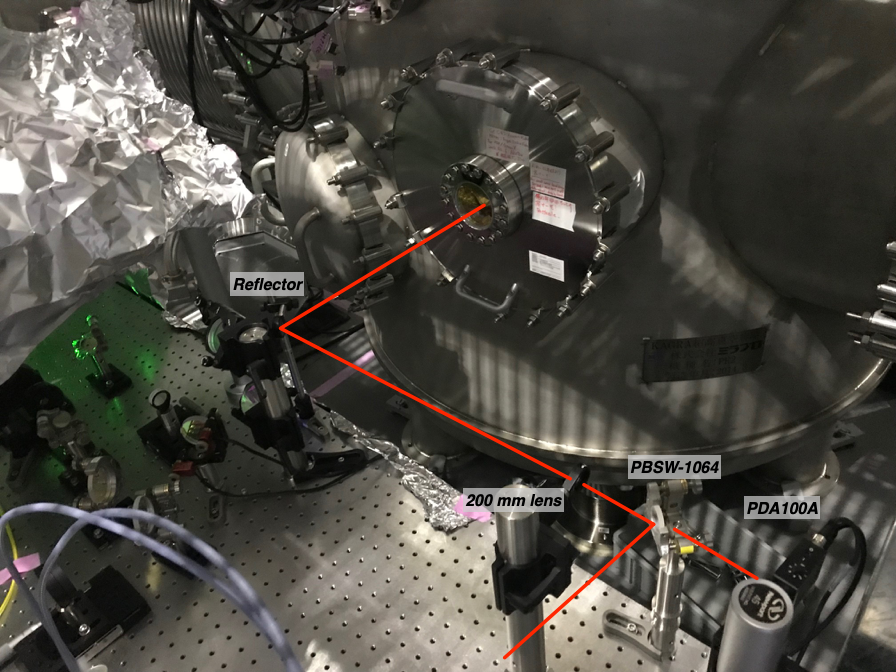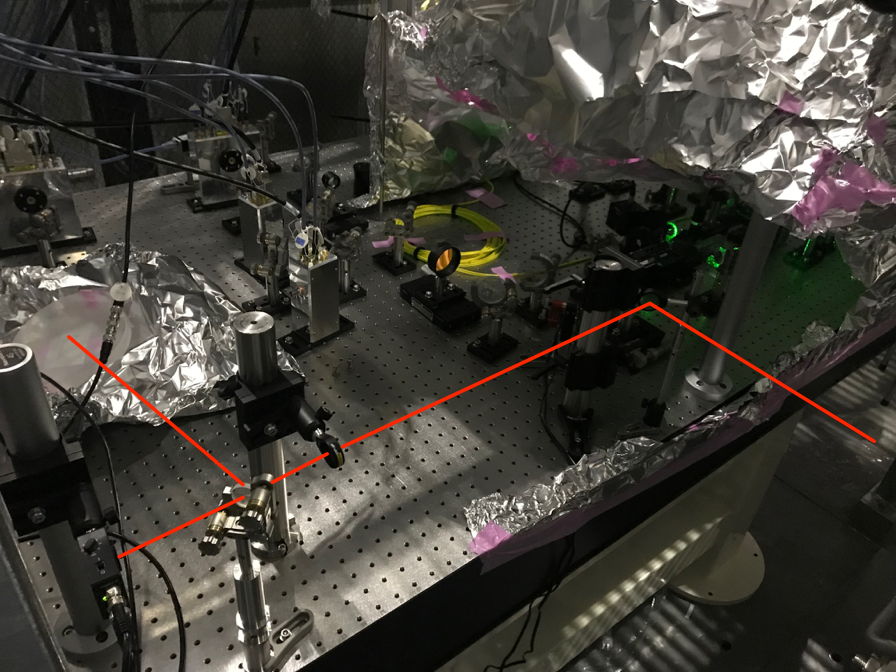Yutaro, Kiwamu,
Recently, a number of people brought up the concern that the polarization contents of the input light can be messed up (9319, 9317) in the context of understanding the unidentified optical loss in PRMI (9300).
In order to clear this concern, we went out to the floor again today and measured the optical power in the S- and P-polarizations for the forward propagating beam (in transmission of PR2) at the POP in-air table.
The answer is that the input light is quite purely S-polarizing with a tiny amount of P-polarizing component at a level of 3e-4.
[The setup]
See the pictures below. We have again used the thin plate PBS from Thorlabs, PBSW-1064 1 inch (9320). The setup was built on the POP in-air table.The alignment in transmission of the PBS became much easier once we had PRMI flashing. Otherwise, the beam in transmission was not visible even with an IR viewer. The output from the PDA100A was hooked up to an ADC which had the channel name "K1:ALS-X_ARM_INPUT".
[The results]
Here is a summary of the measurements:
- S-pol; 3375 +/- 15 cnts (including dark offset of 33 .0 +/- 0.5), 30 dB setting
- P-pol; 61.89 +/- 0.51 cnts (including dark offset of 61.07 +/- 0.44 ), 30 dB setting
- P-pol; 4381.4 +/- 8.6 cnts (including dark offset of 4279.2 +/- 9.1), 70 dB setting
Assuming a good cross-calibration of the PDA100A between the 30 dB and 70 dB settings, we hereafter use the result with the 70 dB setting for the P-pol measurement.
Therefore, the extinction ratio or the amount of the P-pol against the S-pol. is
(4381.4 - 4279.2) / 100 / (3375. - 33.0) = 3.06x10-4
From this, we are concluding that the incident light has highly pure S-pol.
We are leaving the setup as it is so that we can monitor the amount of the P-pol light in the PRC when it is locked.



